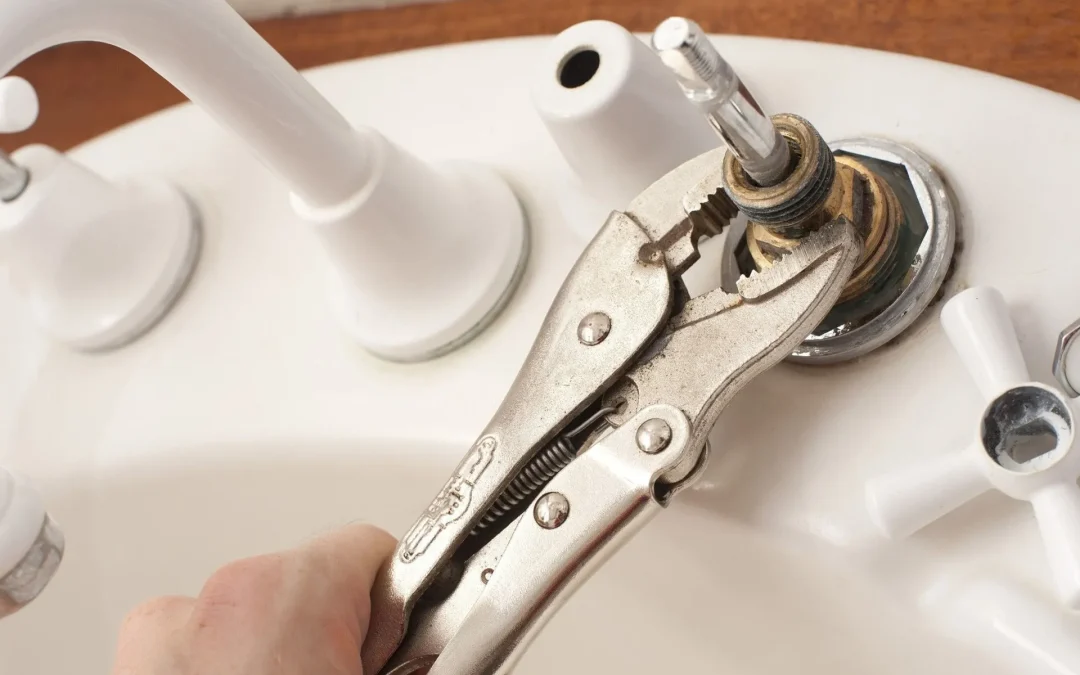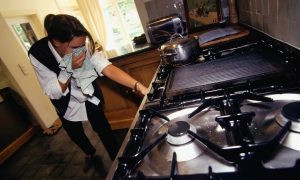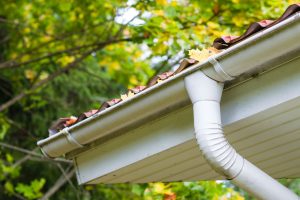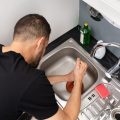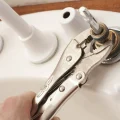Dripping taps are one of those little annoyances that can quickly drive you mad. That constant DRIP … DRIP … DRIP isn’t just irritating – it’s also wasting a lot of water and increasing your bill right in the middle of a cost-of-living crisis. Thankfully, a worn-out tap washer is often the culprit – and yes, it’s something many homeowners can fix themselves. In our exclusive guide, we’ll walk you through how to change a tap washer safely, what to watch out for, and when to stop and call a fully-licensed plumber.
Why tap washers wear out
Every time you turn a tap on or off, the washer inside it presses down against the valve seat to stop water flow. Over time, this rubber or nylon component wears out, hardens, or becomes brittle. The result?:
- A leak
- A squeaky handle
- A tap that won’t turn off properly
- Water leaks around the handle
- A tap that feels loose or wobbly
- Inconsistent water flow or reduced pressure
- A stiff or hard-to-turn handle.
All of this is particularly common with hot water tap washer replacements – as heat accelerates that inevitable wear and tear.
Can you replace it yourself?
In most cases, yes – in Queensland, changing a tap washer inside your own home is allowed by law for basic maintenance purposes.
But, you MUST NOT:
- Modify plumbing lines
- Connect new tapware
- Or work on anything involving mains pressure systems, unless you have that plumbing license.
Unsure? Just ask! Because getting it wrong can cause flooding, water hammer, or damage that ends up costing more than a straightforward and affordable service call.
The tools you’ll need
Before you get started, get these together:
- Adjustable spanner or wrench
- Flat-head screwdriver
- Cloth or towel
- Replacement water tap washer
- Plumber’s grease (optional)
- Tap reseating tool (if the valve seat is damaged).
Make sure you buy the right washer tap type and size – as these vary between brands and tap styles. It’s a good idea to take the old one to the hardware or plumbing supplies store if you can.
Step-by-step: How to change a tap washer
Follow these steps very carefully to avoid damaging your tap or pipework.
1. Turn off the water
Start by turning off the water supply to the tap. Use your mains water valve or the isolation valve under the sink if available. Then open the tap to release any remaining pressure and water.
2. Plug the drain
Place a towel or plug over the drain to prevent small parts from falling in!
3. Remove the tap handle
Use a screwdriver to gently pry off the cap or cover, exposing the screw. Remove it and lift off the handle.
4. Unscrew the tap bonnet
Using a wrench, unscrew the metal bonnet to expose the tap body. Be careful not to scratch nearby surfaces!
5. Remove the spindle
Once exposed, remove the spindle assembly. Inside the bottom end, you’ll see the old washer.
6. Replace the washer
Take out the old washer and insert the new one. If the seat inside the tap is corroded, use a reseating tool to grind it smooth before inserting the new washer.
7. Reassemble the tap
Grease the spindle lightly (if you’ve got that plumber’s grease handy) – then simply reverse the steps above to reassemble the tap. Just make sure everything is fully tightened – but not over-tightened!
8. Turn the water back on
Slowly turn the water back on and test the tap. The drip should be gone – and your sanity should be restored!
Common tap washer replacement problems
It all sounds simple – but you may be surprised just how common tap washer replacement problems are. Here’s what to look out for:
Tap still leaking?: The valve seat may be damaged or pitted.
Washer too loose or tight?: Using the wrong size washer can stop the tap from sealing properly.
Tap won’t turn off at all?: You may have reassembled it incorrectly or cross-threaded the spindle.
Water hammer?: If your pipes now bang, air could be trapped – or you’ve overtightened.
These are all signs that it’s time to stop, bite the bullet, and call a friendly plumber – before things escalate.
Tips for replacing tap washers successfully
- Always replace like-for-like, so if your old washer is brass, get the same kind.
- Check the O-rings too, because they can crack and leak independently of the main washer.
- Do one tap at a time so you don’t get parts mixed up.
- If the tap feels stiff after reassembly, don’t force it – something may not be aligned.
- Be extra cautious with hot water tap washer fittings, as they can be pressurised or worn from years of use.
Knowing how to change a tap washer Australia-style means understanding both the right tools and the limits of legal DIY. Don’t forget that safety and compliance matter just as much as getting that leak fixed.
Preventing future leaks
Once you’ve mastered replacing a tap washer, the next step is making sure it lasts for as long as possible. So:
- Don’t overtighten taps – this crushes the washer unnecessarily.
- Turn taps off firmly but gently.
- Keep an eye out for drips after installing new washers.
- Have a licensed plumber service your taps every few years for long-term peace of mind.
- If you’re replacing multiple washers across your home, consider upgrading to ceramic disc tapware – it’s more durable and requires less force to operate.
When to call a plumber
Sometimes, no matter how many times you try, replacing tap washers still isn’t a straightforward job – even if you’re pretty handy! Here’s when to bring in a licensed plumber:
- Tap still leaking after new washer
- Damaged valve seat
- Handle spinning loosely
- Unusual noises or water pressure problems
- Older taps that may need full replacement.
Here At Static Plumbing, we offer fast, affordable tap washer replacement across Brisbane Northside, Moreton Bay, the Sunshine Coast and beyond. Whether it’s a simple fix or part of a broader plumbing issue, we’ll handle it all properly from start to finish – no mess, no guesswork.
Need help replacing a tap washer?
A dripping tap might seem small, but left too long it can lead to higher bills, water damage, and immense frustration. So whether you’re stuck mid-job or just want a professional tap repair or replacement, we can help.
Struggling to change tap washers at your place? Reach out to Static Plumbing today for expert help with leaking taps, tap upgrades, washer replacements and so much more – all done right the very first time.

